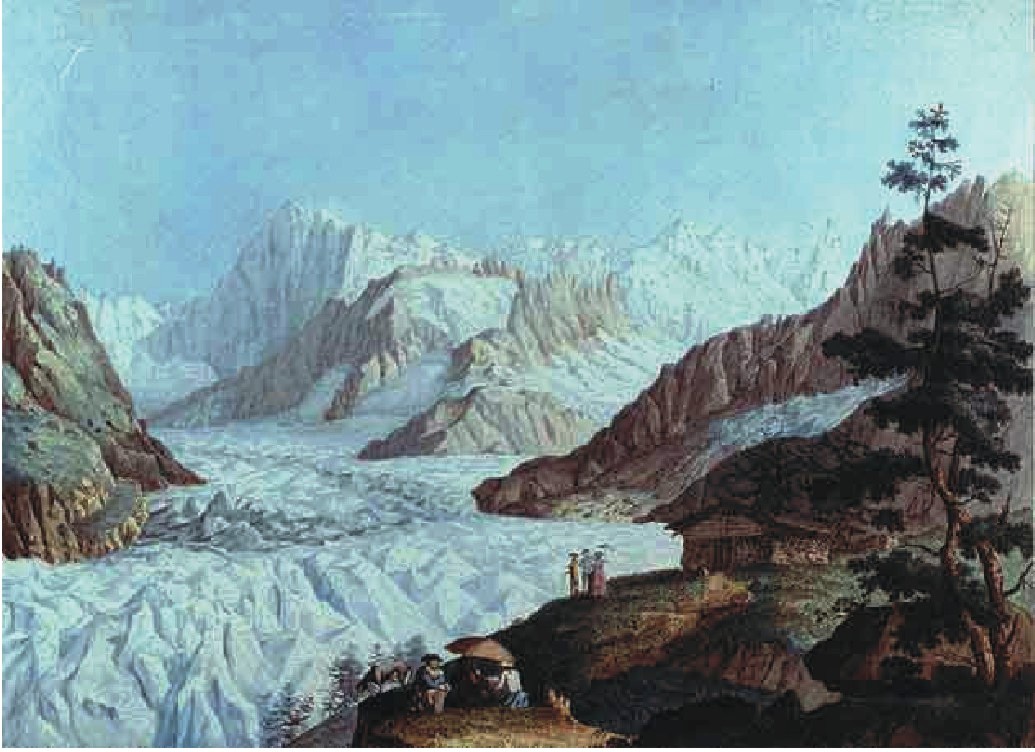C RWG
O


Mer de Glace, Chamonix, France, 1832.
The maximum recorded extent of the Mer de Glace was in 1800, close to the end of the Little Ice Age (1308 to 1850), when the glacier surged forward and destroyed houses in the Chamonix valley. The glacier has lost an estimated 50 m of thickness and 1 km of length in less than 200 years.
Mer de Glace, 2008. Global-warming? Perhaps, perhaps not.
The scientific consensus is that the addition of large quantities of man-made gases to the atmosphere, principally CO2, since the beginning of the Industrial Revolution has resulted in a steady increase in the global temperature. An increase that cannot be accounted for by the observed variations in natural phenomenon such as pre-Industrial Revolution climates, solar radiation and the Earth's orbit. The principal losers will be those who currently eke out a subsistence living in climactically stressed environments that require little change to convert them from hospitable to inhospitable. Those living on the edges of deserts or in areas dependent on seasonal rainfall will be especially vulnerable, as will those who depend on an extensive Arctic sea-ice to catch their prey. In temperate regions the climatic effects will be small, but they will have an economically disproportionate effect because of the highly developed nature of the countries affected. Wetter winters and a greater incidence of storm surges have both been predicted for United Kingdom. The former would give rise to a marked increase in the number of landslides and flood events, and the latter would result in the overtopping of sea defences in many densely populated areas.
C RWG
O